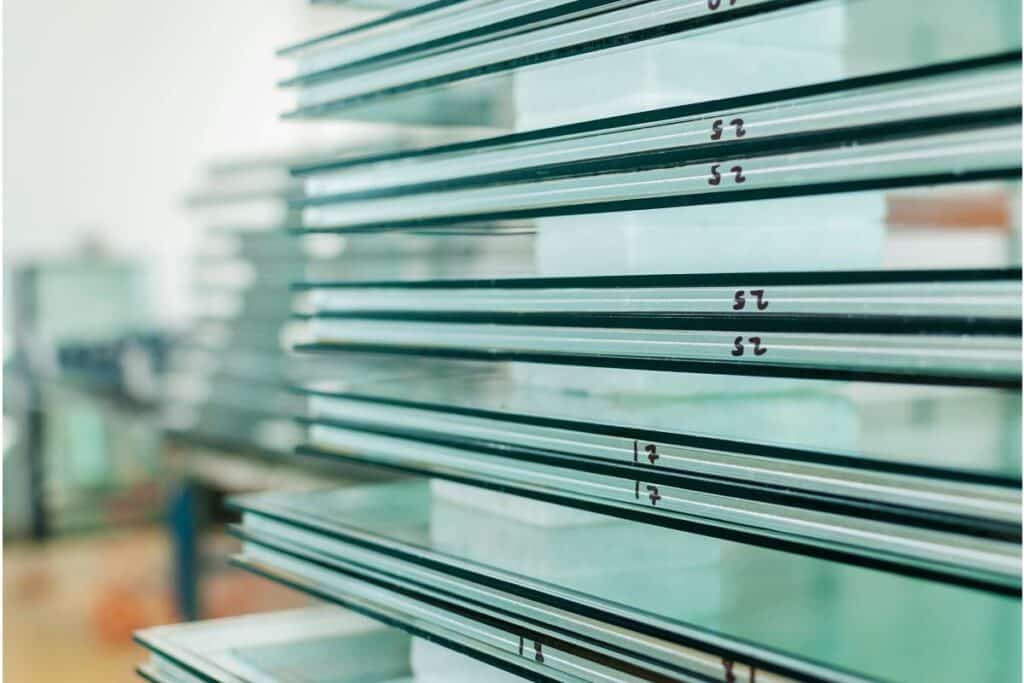UL 752 is the top industry testing standard for bullet resistant materials, and is where the term “UL-rated” comes from when referring to bullet proof windows. The most important consideration when selecting these materials is their ability to withstand any potential threats that a building may face. However, architects, designers, and building owners must also consider practical factors like durability and visibility.

Here’s a guide to the main considerations when selecting UL-rated bullet proof windows, including the level of protection offered, durability, and visibility.
What Are UL Ratings for Bullet Proof Windows?
Before diving into the visibility and durability considerations when selecting bullet proof windows, here’s a refresher on the actual protective value of each level for UL-rated bullet proof windows:
- Level 1 materials are able to withstand fire from small caliber handguns – at least three 9mm full metal jackets traveling at 1,175 feet per second or faster.
- Level 2 materials are able to withstand fire from larger caliber handguns – at least three shots of .357 magnum soft points traveling at 1,250 feet per second or faster.
- Level 3 materials are able to withstand at least three shots of .44 magnum rounds at 1350 feet per second or faster.
- Level 4 materials can withstand at least one shot from a .30 caliber rifle with a minimum velocity of 2540 feet per second.
- Level 5 materials can withstand at least one 7.62mm rifle full metal jacket with a minimum velocity of 2750 feet per second.
- Level 6 materials can withstand at least five 9mm rounds traveling at a minimum velocity of 1400 feet per second.
- Level 7 materials can withstand multiple 5.56 rifle full metal jackets traveling at a minimum velocity of 3080 feet per second.
- Level 8 materials can withstand at least five shots from a 7.62mm rifle.
UL levels 1 through 3 are linear, in that each one provides a higher level of protection than the last. Levels 4 through 8 are not linear, their protection levels simply differ based on the type of ballistics used in each test.
Though each facility should perform its own threat assessment, there are a few generalizations that often help businesses and organizations narrow down their options. For example, UL-rated bullet proof windows at Level 1 are often used at small businesses like convenience stores that simply want a crime deterrent. Levels 2 and 3 bullet proof windows are often utilized at larger facilities like banks, police stations, and schools. High levels of protection like UL Level 8 products are often utilized at military facilities and government buildings.

Visibility Considerations
Bullet resistant windows are designed to offer as much optical clarity as possible, since they are meant to mimic the look of actual glass. However, these materials often include multiple layers or materials that aren’t completely clear. So they sometimes have a slight tint.
Every material is different. But in general, materials that offer lower levels of protection, like those rated at UL Level 1, tend to be thinnest and most clear. Those rated at higher levels of protection often have the most layers and materials that may slightly distort light.
Of course, visibility preferences for bullet resistant windows vary depending on their location and application. For example, many facilities prefer lots of optical clarity to maximize natural light or create friendly experiences with customers at transaction security windows. However, some facilities use interior bullet resistant windows and doors to create safe rooms or “cash box” rooms where valuables are stored. So a bit of extra privacy is often preferred in these instances.
Durability Considerations When Selecting UL-Rated Bullet Proof Windows
UL-rated bullet proof windows are strong enough to withstand ballistic impact, so they can also hold up against wear and debris in various environments. However, some levels are better suited in specific environments than others.
For example, acrylic is a popular option for UL-rated bullet proof windows that offer low levels of protection, like those rated at UL Levels 1 and 2. Though acrylic is stronger than glass, it can be scratched easily, so it’s often used in interior applications rather than exterior windows and doors where it may be exposed to the elements.
In fact, facilities that require durable solutions often go with products that are produced with actual glass, like glass-clad polycarbonate or laminated glass. These materials contain extra layers that hold it together if struck by a bullet, but the outer layer is still made of durable glass that is resistant to scratching and weathering. These materials are available in a wide array of UL levels.
Durability considerations also generally vary based on the application and environment. For example, interior countertop windows don’t generally need to stand up to as much daily wear and tear as those used in exterior doors that may be exposed to constant weathering. Additionally, buildings located in different climates may require special finishes to protect materials from UV rays or other potential hazards.
If you’re looking for UL-rated bullet proof windows for your facility, Insulgard has a huge range of products to choose from. Our BulletBlock line offers superior protection, and all products are tested against top industry standards like UL 752. Our knowledgeable team can direct you to the products that best suit your protection, visibility, and durability needs, and connect you with value added services like customization and installation. Visit our website to learn more about how our UL-rated bullet proof windows can benefit your facility.

